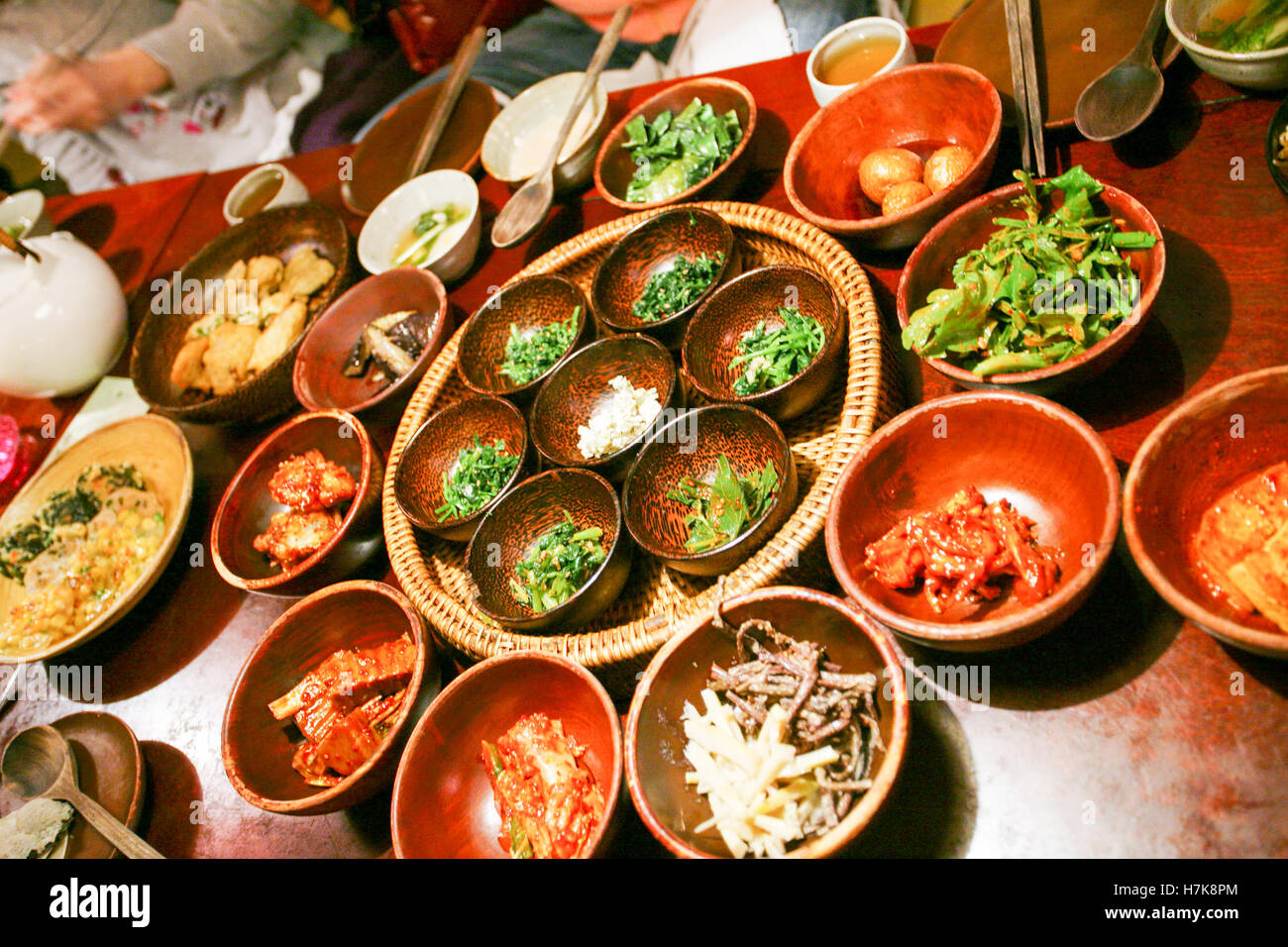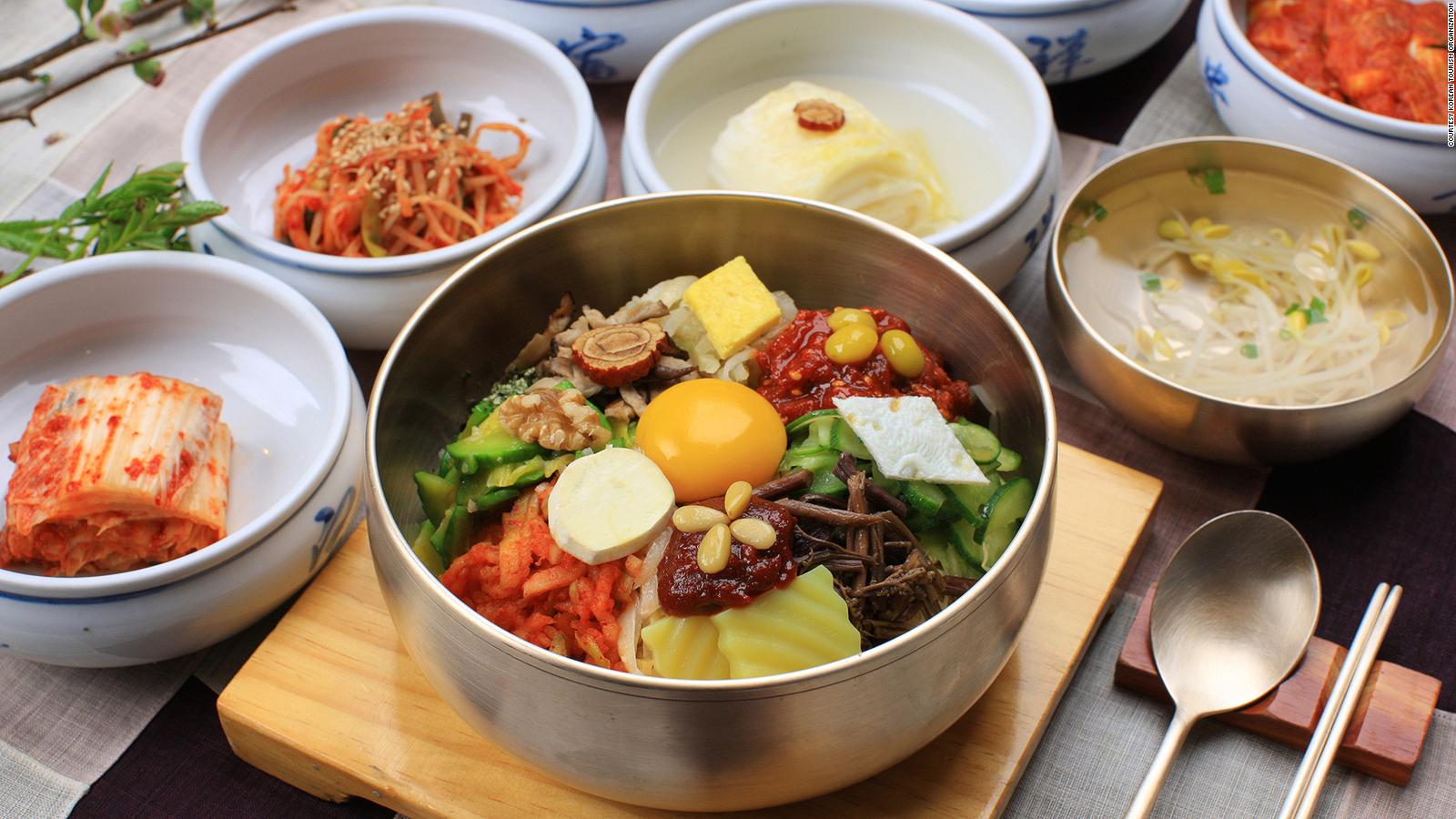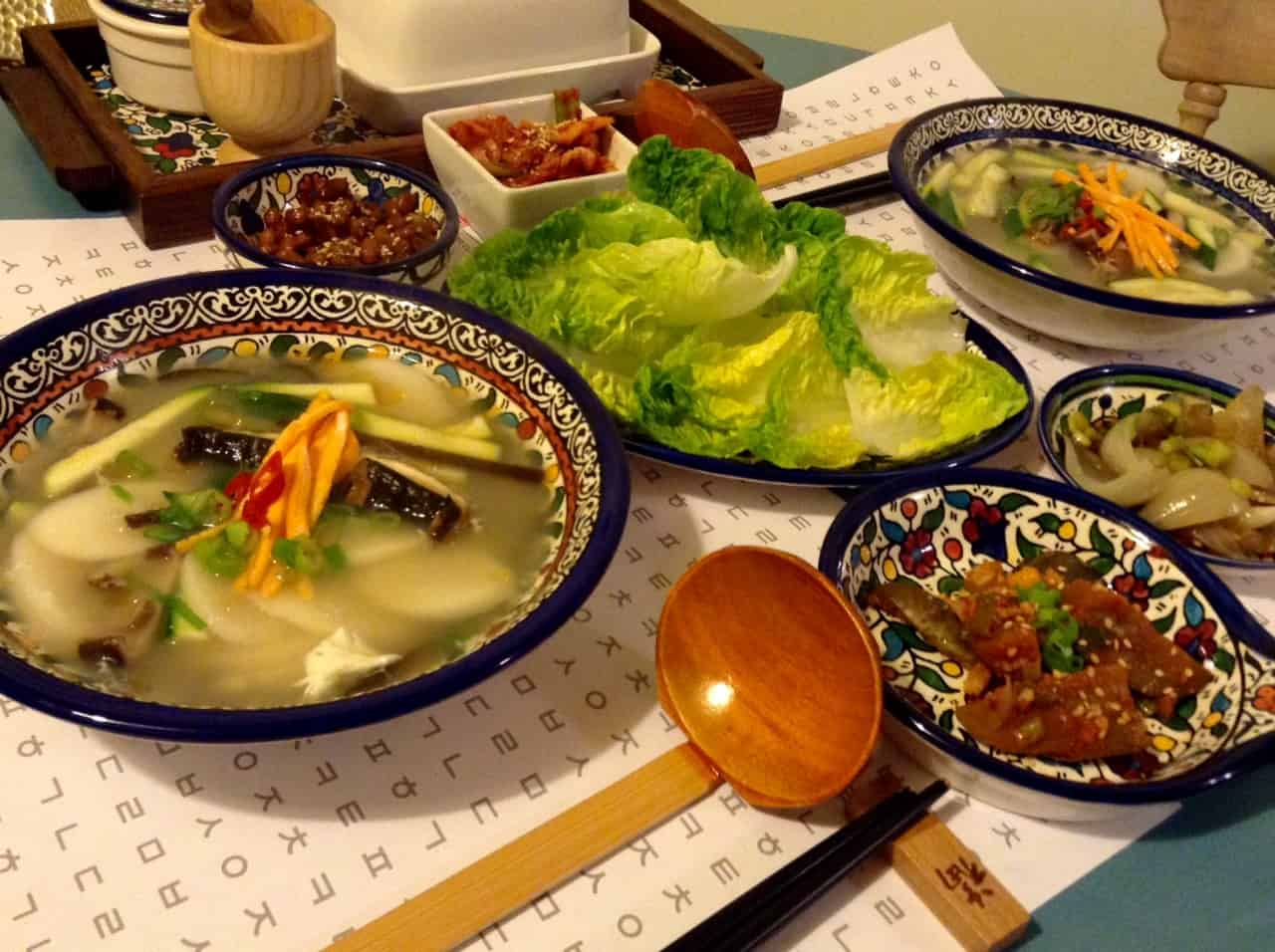
Delicious and Yummy Korean Meal Recipes (Mostly Healthy)
This article discusses the importance of table manners in Korean culture, including proper use of chopsticks and spoons, serving food, drinking etiquette, table setting, eating pace, conversation etiquette, finishing meals, paying the bill, accommodating food allergies and dietary restrictions, and body language. Following these guidelines is important for building relationships and showing.

A typical Korean homestyle table setting
What does a typical Korean meal look like? A typical meal in a Korean home consists of rice, soup and side dishes (called Ban-Chan in Korean) . There may be more banchan and a main meat or vegetarian dish. Grilled fish is often enjoyed as well. The magnitude of the dinner table is dictated by s

An abundance of Korean table d'hote. Korean food, Asian recipes, Food
Eating traditional Korean meal can be a spectacle that's best shared with friends or family. Korean meals come with an array of side dishes to sample, a large pot of something yummy boiling or frying in the centre of the table, and food lovingly prepared by chefs who specialise in this one dish.

Full table of Korean Kimchi, Korean meal Stock Photo Alamy
3 Quick Korean Side Dishes (Avocado, Mushrooms, Tofu)Lastly, have a list of really quick and last-minute side dishes that you can make in just a few minutes for those times when you just don't have the time or energy to cook additional dishes.. See my 3 Quick Side Dishes post for ideas.. Korean Menu Planning for 1 week. Below, I have a sample meal plan for 1 week.

A Korean dinner party Kimchimari
Tagged as 30 Korean side dishes (banchan: 반찬), baekban-jeongsik, banchan, 밥상, 백반정식, hanjeongsik, 한정식, Korean banchan, Korean bapsang, Korean cooking, Korean cuisine, korean food, Korean kitchen, Korean pre-fixed meal, Korean restaurant food, Korean side dishes on the table, Korean table, korean table setting

Foodie guide 10 unique Korean dishes you got to try! KoreaTravelEasy
Welcome to Korean Bapsang! I'm so glad you're here. You've come to the right place to cook delicious Korean food. Korean Bapsang means a Korean table at which meals are enjoyed. Bapsang (밥상) is made up of two separate words in Korean - bap (cooked rice) and sang (table). Rice plays such a critical role in Korean food and the culture.

A table set of Korean food Korean food, Korean cuisine, Slow food
However, part of the South Korean dining etiquette is saying "I will enjoy this food". This is considered very polite especially when you are eating at someone's home as it means that you are looking forward to the meal that's served on the table. How do you pronounce Jal mukkesseubnida? You pronounce it as chal-mok-ett-soom-ni-da.

Traditional Korean dining, that is characterized by banchan, the many sides to be shared by
The Korean table culture. Where should rice, soup, side dishes, etc. be placed on the table? In Korean table culture, a smaller bowl of rice is placed on the left side and soup is placed on the right side of the rice. On the right side of the soup, place the cutlery (수저). The cutlery is a spoon (숟가락) and a couple of chopsticks.

How To Order at Korean BBQ and the Best Dishes To Try
Learn basic ingredients, cooking techniques, table manners and more in Korean food and cooking. Fear of Fermentation? This Kimchi Recipe is Perfect for Beginners. 45 mins Ratings. TY KU Soju Review. Korean Food 101. The 15 Essential Korean Ingredients You Should Know. Wine Pairings for Korean Food.

Korean food photo My simple table setting for lunch ) on
It is common to see at the Korean dinner table where many people are using their own chopsticks to eat the shared banchan (side dishes). The typically shared Korean-style meals link to occasions when large groups of diners ate together almost a century ago. This was in the 1920s and '30s during the Japanese colonial era when food was scarce.

What Is Typical Korean Food Lucy Rrestaurant And Bar
The best way to enjoy a Korean meal is to enjoy each and every dish and move around the table. Don't be choosy with one side dish and rice. The meal won't be very enjoyable in the end and also others at the table might think you're a bit greedy and don't want to share.

Healthy Korean Dining Table Stock Image Image of chopstick, culture 127511309
Most Korean meals are served communally, with shared dishes in the center of table and (often) individual servings of rice and soup placed in front of each diner.As a result, serving sizes in recipes can vary: A recipe for a batch of radish greens kimchi could yield enough to last you a month, a banchan recipe might produce enough for three or four meals, but a pot of rice or porridge might.

Korean food photo Eva’s Korean table on
Korean food etiquette is mostly common sense with few culture-specific exceptions. However, with an open and friendly attitude, you'll find Koreans to be understanding and gentle in letting you know if you unknowingly commit an offensive act.. When finished your meal, place cutlery back on the table as before and express another phrase of.

12 Traditional Korean Food & How They’ve Evolved Over Time
The most important part of any Korean meal - breakfast, lunch, or dinner - is rice. It's more than just the main dish, it's the foundation of the meal. With a few possible substitutes: noodles, porridge, dumplings, or rice cake soup, every meal is built around rice, and without it, I don't even feel like I had a meal at all!

Korean Table Setting & Juksang (gruel Table) Arrangement Sc 1 St Korea Tourism Organization
Korean meals emphasize communal eating, with diners often sharing the various dishes placed at the center of the table. The variety of flavors, textures, and ingredients in a typical Korean meal reflect the nation's rich culinary traditions and the importance of balance and harmony in eating.

The Takeout's guide to eating Korean food like a Korean
Another thing you'll notice anytime you sit down for a meal is the central importance of the bowl of rice, which anchors the entire meal. Far from being considered a side dish, rice is essentially the star, as is common in many other Asian countries. Every other element of the meal serves as an accompaniment for the rice.